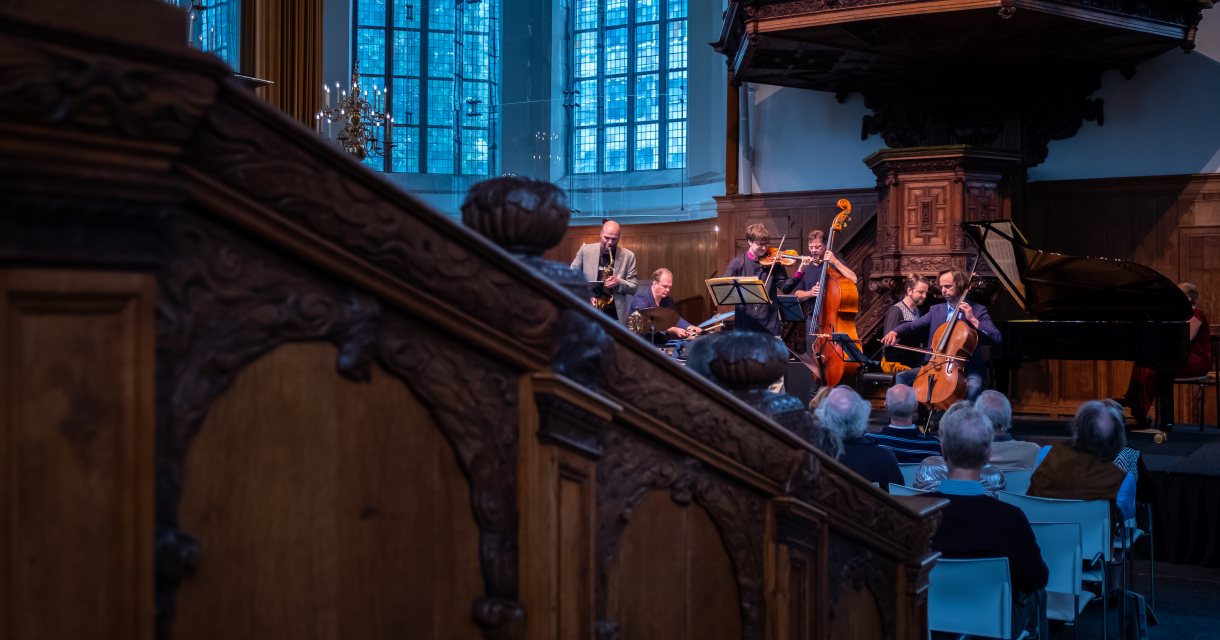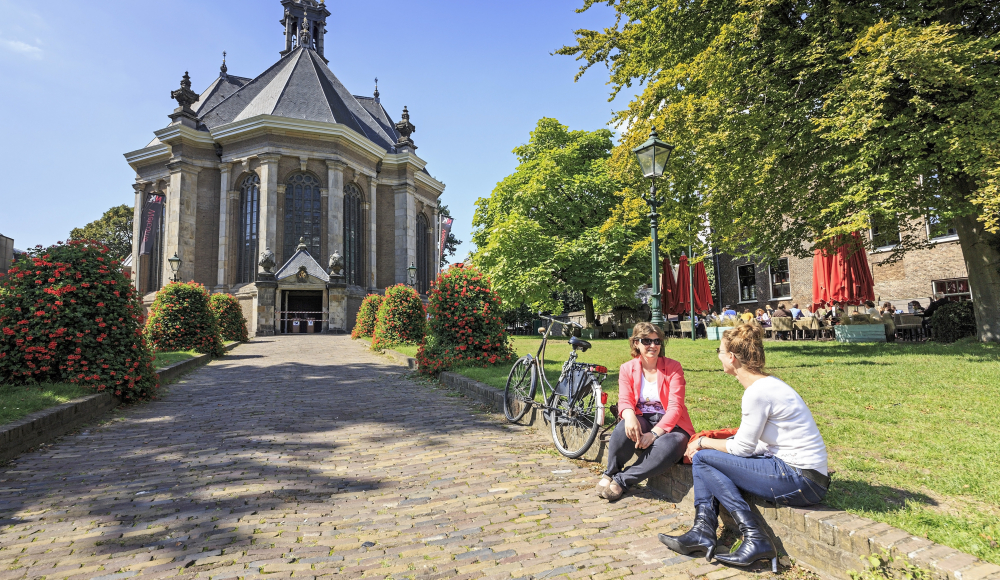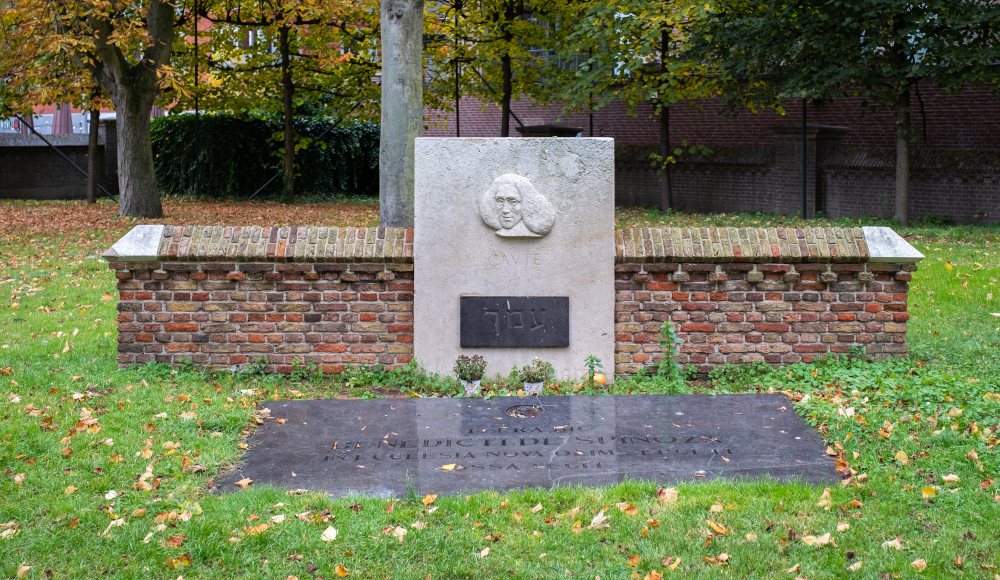

The New Church
Special map
Several aspects of the New Church are noteworthy. The floor plan consists of two adjacent hexagons, so that the church has two transverse axes in addition to a main axis. This fact takes on special significance in the knowledge that the church was specially designed for Protestant worship. The division associated with the church service has taken shape in the floor plan: the proclamation of the Word is central and the congregation gathers around it.
Construction
The church is located on a walled site, originally a cemetery, giving the construction a 'temenos-like' character. The roof of the church is exceptional in construction and spatial effect. Nowhere does the hood rest on columns or pillars and draw beams are also missing; the hood is supported by four buttresses and rests further on the pavilions emphasizing latitude and longitude axes. This construction allows the eye to wander through an uninterrupted space and to rest on important inventory items such as gentlemen's benches, pulpit, stadtholder's bench and baptismal gate, the carving of which was done by Engel Westerwout (1651), so that the centralized basic form comes into its own.
Organ
The organ was built in 1702 Joh. Duyschot (and largely renovated in 1867), as painted shutters by Th. van der Schuer.
Concert and conference venue
Today, the New Church is used as a conference and concert center. In 1997, architect Cees Spanjers made an acoustic adjustment so that the church hall has perfect acoustics for chamber music (a glass hall principle).

Het grafmonument van Baruch Spinoza
The garve of Baruch Spinoza - Philosopher, mathematician, political thinker
He is regarded as one of the most influential philosophers in Dutch history: Baruch Spinoza. Born in 1632, he was of Sephardic Jewish descent and grew up in Amsterdam. During the 'early' enlightenment, when people wondered what is true in the Bible, Baruch also began to have his doubts about the Talmud and the Torah. He calls them inventions of the human fantasy.... He emphasized reason. In 1656 a Cherem (ban) was pronounced and he was expelled from the Sephardic congregation.
Spinoza died of tuberculosis on 21 February 1677 and was buried in the New Church. This rented grave was cleared in 1738. A funerary monument has been erected on the former churchyard the rear. After the visit of the Israeli statesman David Ben Gurion in 1958, a black basalt stone from the mountains of Galilee was placed with the text 'Amcha' (your people). The recumbent stone contains the text 'Terra hic Benedicti' (Latin for the blessed) de Spinoza in 'Ecclesias Nova olim sepulti ossa tegit'. (This earth covers Benedict de Spinoza, anciently buried in the New Church).
Accessibility
The New Church is located in the city center of The Hague and is easily accessible by various means of transport. You can park your car at the Parking Garage Stadhuis. In addition, theNew Church is also easy to reach by public transport. Central Station is within walking distance.

